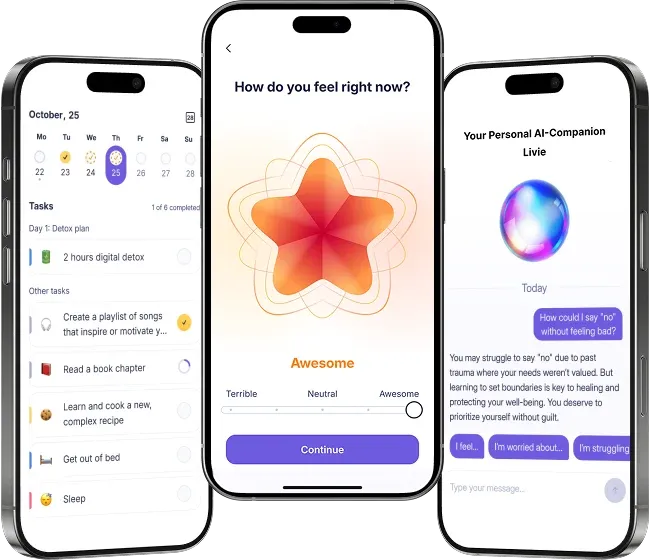Supporting children with ADHD: available treatment methods

Attention-deficit/hyperactivity disorder (ADHD) in children is a common neurological disorder that affects a child's ability to concentrate, regulate impulses, or behave. The effects of ADHD, however, are not limited to hyperactivity or general inattentiveness. They are present in nearly all aspects of a child’s life, such as social interactions, academic performance, emotional stability, and family relationships. However, every case is unique, and the impact of ADHD can vary depending on each child's individual features and environment.
Despite the surge in ADHD diagnoses among children in the past few decades, the condition was first officially recognized in the second edition of the American Psychiatric Association’s "Diagnostic and Statistical Manual of Mental Disorders" (DSM) in 1968. At the time, it was defined as a hyperkinetic reaction of childhood. However, despite being recognized only in the second half of the 20th century, various treatments for hyperactivity had been used for decades prior.
Today, with growing research, diagnostic criteria and treatment methods have been refined to address the specific needs of children with ADHD and provide safe, effective, and individualized care. Let’s explore the types of treatment for ADHD in children available today and their effectiveness.
Overview of ADHD and Its Impact on Children
More than 11% of US children have been diagnosed with attention-deficit/hyperactivity disorder, which makes it the most common neurodevelopmental disorder in children. This type of disorder affects nervous system development, potentially affecting cognitive, social, or emotional functions.
However, it is particularly difficult to diagnose ADHD in certain groups, such as children under four years old, teenagers, or those with co-occurring conditions. Anxiety disorder, autism spectrum disorder, or learning disabilities may all share some similar symptoms.
ADHD Types
Since the introduction of DSM-4, there have been three commonly recognized types of ADHD diagnosis. These classifications remain relevant in the current version, the DSM-5. They include:
- Predominantly hyperactive/impulsive: Children with ADHD struggle with staying still, impulsiveness, and very high physical activity. Fidgeting and constant talking are also common signs.
- Predominantly inattentive: The main issue lies in distractibility, forgetfulness, and difficulty focusing on tasks.
- Combined: In this case, all of the symptoms mentioned before are present.
Keep in mind that a healthcare professional takes into account multiple factors before deciding on a treatment plan. A child simply being inattentive in class or hyperactive on a playground is not sufficient evidence for concern. There is no universal test for attention-deficit/hyperactivity disorder. Proper ADHD diagnosis requires thorough child's behavior evaluation and active participation of parents, healthcare professionals, educators, and other caregivers involved.
Impact of ADHD on Children
ADHD-related issues go beyond struggling to succeed in class. Multiple studies have shown a correlation between this disorder and issues like low self-esteem, increased anxiety, physical and mental health issues, and overall quality of life (Coghill & Hodgkins, 2016).
For example, when a child struggles to complete their homework or stay organized at school, it may result in frustration and a sense of failure. This may also lead to increased tension at home, with family members struggling to understand the reasons behind certain inappropriate behavior.
Children with ADHD also commonly have less sleep, which can affect their mood and learning ability, further amplifying the issues (Peasgood et al., 2016). This evidence further emphasizes the need for early diagnosis. Seeking guidance and support from a professional you trust can help both your child and your family.
Methods Beyond Medication Treatment
Given the recent rise in ADHD diagnoses, many parents fear their child being misdiagnosed. Some attribute this rise to perceived overdiagnosis and overtreatment, which makes them more reluctant to take proactive measures when noticing symptoms in their child. Many simply don’t want their children to be reliant on ADHD medication and would love to explore alternative approaches.
While it is possible to get misdiagnosed, seeking professional support can help you and your child to relieve the symptoms and adapt early on. It can be especially important, considering that attention-deficit/hyperactivity disorder is often underdiagnosed in teenagers and young adults.
Early diagnosis and treatment can be a game-changer for you and your child. And you don’t have to rely solely on ADHD medications—decades of research have brought us multiple methods of managing ADHD that go beyond prescribed medication. They include:
- Parent education and training programs
- Behavioral therapy
- Cognitive behavioral therapy
- Social skills training
- Sleep management and others.
To treat ADHD successfully, timely diagnosis is crucial. However, it’s important to remember that each case is unique and typically requires a complex approach. However, even seemingly small steps like improving diet and sleep schedules can have a great effect on the child’s overall well-being (Becker et al., 2019). Make sure to consult with your healthcare provider to create a balanced and individualized treatment plan.
Medication Options for ADHD
Please, note that only licensed practitioners can administer medication or suggest treatment plans. This piece is aimed at providing an overview of treatment options.
ADHD Medications are a common and successful method for managing the symptoms in children. It takes time to find the right option for each specific case, but most people report significant improvement over time. ADHD medications fall under two major groups: stimulants and non-stimulants, with stimulant drugs being the most common type.
Stimulants
They increase the level of specific neurotransmitters in the brain, increasing your cognitive abilities. The two types of stimulants are immediate-release and extended-release medications.
Immediate-release stimulant medications are usually taken several times per day, and their effect lasts for about 4–6 hours. Extended-release options, hence the name, work for about 10–12 hours and are usually taken once a day in the morning.
Stimulants should be taken under the strict supervision of your healthcare provider. Misuse can lead to serious consequences and pose risks. Do not change the dosage without consultation with a doctor.
Non-Stimulants
These are also prescription drugs, however, you are less likely to become dependent on them. Non-stimulants can help you improve focus and attention and manage impulsivity, but they show their full effects after a certain period of use. Noticeable effects should appear after 3–4 weeks.
Comparison
| Aspect | Stimulants | Non-Stimulants |
| Primary Effect | Improves attention and focus by increasing dopamine and norepinephrine activity
| Improves attention and focus without directly affecting dopamine |
| Time | Immediate-release: 4–6 hours Extended-release: 10–12 hours | Takes several weeks to reach full effectiveness (up to 3–5 weeks)
|
| Common Side Effects | Insomnia, decreased appetite, increased heart rate, anxiety | Fatigue, drowsiness, dry mouth, lower blood pressure |
| Best Suited For | Children and adults who need immediate symptom relief and can tolerate stimulants | Patients who don't respond well to stimulants or have heart concerns
|
| Duration of Action | Short (4–6 hrs) to long (10–12 hrs) depending on formulation | Consistent effects throughout the day, no crash period |
Proper medication can help improve your child’s concentration, control over impulses, and overall ability to follow through with tasks, such as homework or class activities. However, you should understand that certain behaviors or emotional issues may persist even with medication. Hence, combining an ADHD medication with lifestyle changes and/or therapy is essential to reach lasting results.

Non-Medical Approaches to Child’s ADHD Treatment
As we’ve mentioned earlier, certain lifestyle and behavioral changes can be particularly useful and even essential for ADHD treatment in children. One of the key aspects is reducing screen time and encouraging your child to spend more time involved in physical activity. Individual and non-competitive sports can be a safe and fun way to improve both mental and physical health.
Another major aspect of reducing ADHD symptoms is sleep hygiene. According to a study by Hiscock et al. (2015), reducing caffeine intake and screen time before bed and maintaining a bedtime routine helped improve ADHD symptoms and the physical well-being of children. Teaching children mindfulness techniques can also be beneficial in managing impulsivity.
Different healthy behaviors can also influence one other positively. For example, engaging in active sports can naturally reduce screen time and improve the sleeping routine. It also increases thirst and hunger, which may help with sufficient water intake and food-related routines.
Behavioral Therapy for ADHD
Using both medical treatment and behavior therapy has proven to be an effective method of ADHD treatment for kids. Behavioral therapy by itself cannot target specific physiological symptoms. However, it can help achieve significant improvement in managing impulsivity, for example, by developing specific self-control strategies and skills.
The main benefit of adding therapy to your child’s treatment plan is the individualized support it can provide. Focusing on the issues children struggle most with will help create adaptation approaches that are relevant to the specific personality and lifestyle.
This type of therapy helps reinforce positive behaviors in children and requires active parental involvement. For example, parents who want to help their child focus on homework can set simple and understandable goals with clear rewards and consequences. Following this approach consistently will help achieve lasting results. Here’s what determination and structured approach may reward you with:
- Improved self-control
- Better academic performance
- Enhanced social skills
- Gradual reduction in disruptive behaviors
- Structured and positive home environment
It may not always be simple and children often show the increase of some unwanted behaviors when consequences are applied. That’s where staying consistent will be particularly challenging for some parents, however, the determination will bring the desired effect after a while.
Social Skills Training
It is important to emphasize how important social skills are in your child’s development. They involve the child’s behavior, emotional, and cognitive aspects, therefore, training requires a complex and nuanced approach. To achieve greater success, an individualized approach is a critical factor. It allows to address the child’s unique challenges, strengths, and needs. In itself, social skills training is a long-term game that may potentially show lasting improvements. It can be especially beneficial when going through crisis, even in teenage years.
Social skills training mainly focuses on teaching children how to pick up social cues, adjust their verbal and non-verbal behavior, and regulate both positive and negative emotions (Storebø et al., 2019). Other important skills your child can develop are conflict management, active listening, teamwork, and empathy.
Studies present ambiguous evidence regarding the effectiveness of social skills training for children with ADHD. While improving these skills is beneficial for a child’s socialization, training doesn’t necessarily show any direct improvement in ADHD symptoms or academic performance.
Parental Role in ADHD Treatment
The parental role in ADHD management should not be underestimated. It starts with parents first taking notice of the potential ADHD symptoms. They play a key role in taking proactive measures when it comes to a child’s health and well-being.
In all aspects of medical and behavioral treatment, parental role is essential. You, as a parent, are supposed to make sure your kid takes meds on time, reinforce healthy routines, and create a space where they can learn and improve their behavior.
Very young children lack the maturity to change their behavior. That’s why therapy focusing on parental training is especially effective in ADHD management. For example, learning and applying positive behavior reinforcement strategies will be particularly helpful if your child struggles with studying and sticking to daily routines. It will also help manage the child’s emotional challenges and frustration, ultimately improving family dynamics and reducing stress.
Several types of parent training have been proven effective. They include parent Management Training (PMT), the Positive Parenting Program (Triple P), and Parent-Child Interaction Therapy (PCIT). Training and regular practice in day-to-day situations will bring gradual improvement and lasting results.
Collaborate with healthcare providers and therapists for guidance and support. As the parental role gradually changes during a child’s development and growth, this guidance will help navigate challenges.
It’s equally important to recognize that parents may also need support, especially in the diagnosis stage. They need time to accept and adjust to the new type of communication with their child. Remember, there’s nothing wrong with seeking help and support. Maintaining stability and personal well-being will help parents stay calm when challenges arise and consistent with the child’s treatment.
Professional Support for ADHD Treatment
Several professionals can help you recognize signs of ADHD in your child and take measures. These include, first of all, pediatricians, neurologists, psychotherapists, and psychiatrists.
Teachers and social workers may notice certain symptoms and bring them to your attention. It is important not to brush it off. Pediatricians will use standard American Academy of Pediatrics (AAP) guidelines to determine if your child has ADHD. Developmental and behavioral pediatrics also provides their practice guidelines to assess and treat children with “complex ADHD.”
Neurologists can also use tests to diagnose the disorder, while psychiatrists can administer ADHD medication. Consulting with your healthcare professional early will ensure timely intervention.
You need a licensed professional to provide you with a set of resources, techniques, prescriptions, and guidance. They can develop a structured treatment plan that will be constantly adjusted and revisited over time. A therapist with extensive experience in ADHD treatment in children can provide therapy and parent training relevant to your child’s individual needs.
ADHD treatment for kids can be provided by various specialists, but prescribed ADHD medication can only be administered by certain medical professionals. These include physicians, physician assistants, and nurse practitioners under supervision. To find a provider or relevant resources, consider the following.
- Children and Adults with ADHD (CHADD)
- American Academy of Child & Adolescent Psychiatry
- FIU Center for Children & Families
- Society of Clinical Child & Adolescent Psychology
- CHADD Parent to Parent Program
- Find a local ADHD support group
Conclusion
Given the complex nature of this disorder in children, there’s no simple and natural treatment for ADHD available to date. Exercise, diet changes, and mindfulness practices may help improve and manage certain symptoms, however, there’s not enough research to prove that ADHD can be treated using natural methods.
It is a neurodevelopmental disorder that affects all aspects of life, especially academic performance, family dynamics, and overall emotional well-being. Every child needs a personalized approach and a different combination of treatment methods.
To treat ADHD in kids one would need to involve medication, therapy, and lifestyle changes. While for many parents, medication is often an undesired option, it shows positive effects on children and has proven to be effective in reducing child's ADHD symptoms. Your healthcare provider can design an effective treatment plan for your child and guide you through the process, offering necessary support and resources along the way.
The role of the environment should not be overlooked as well. Parents, caregivers, teachers, and other people interacting with a child need to be educated on the matter to both create a safe and supportive environment for the child and maintain personal stability and well-being.
If your child exhibits early signs of ADHD, do not hesitate to contact your healthcare provider for a consultation. They will carefully examine and gather evidence before suggesting any treatment options. Remember, early medical and behavioral interventions can significantly improve children’s lives and well-being.

